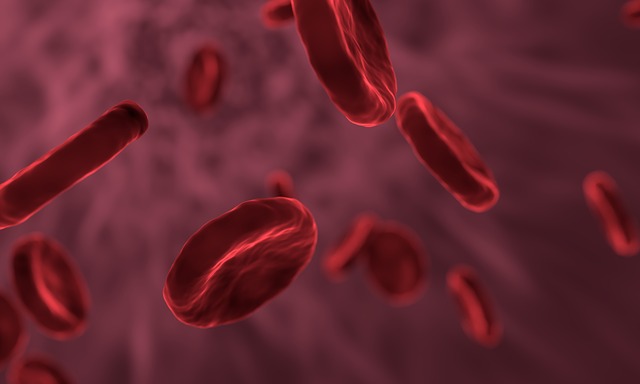A person needing blood counts on donors to save their life
How does this happen? By generous people like you who are donating blood. According to the Red Cross, approximately 32,000 pints of blood are used every day in the U.S. Of the 60% of adults who are eligible to donate, only 5% do so on a regular basis.
Perhaps it’s because people have fear of needles, are nauseous at the sight of blood, or simply never consider the option of donating blood. But regardless of the reason, it’s important to remember that blood donations save the lives of people all over the country. In fact, one pint of blood can save three lives!
Who Needs Blood Donations?
There are many types of patients that require blood donations. They include:
- Emergency surgery patients
- Birthing mothers
- Accident victims
- Patients with blood disorders like hemophilia.
- Burn patients needing blood cell counts and plasma for survival.
- Patients with chronic conditions (cancer, kidney disease, or anemia) needing to raise hemoglobin levels.
Blood Types
A human being can have one of four blood types: Type A, Type B, Type AB or Type O. What’s more, these categories are broken down into positive or negative types. Blood donations have to match in order for the patient to receive the full benefits, otherwise, the blood will clot and this could be fatal. The only exception would be Type O negative as it is considered to be the universal blood time. Because of this, it is in demand.
Blood Counts and Blood Cell Counts
Blood can be grouped or stored in two categories: whole blood or components (packed red blood cells, plasma, or platelets). Once collected, it’s sent to hospitals and other medical facilities. Blood is made up of cells that are suspended in a liquid comprised of plasma. There are three types of cells in the plasma: red cells (carrying oxygen), white cells (fighting infection), and platelets (stopping the bleeding with blood clots).
A cancer patient undergoing chemotherapy suffers from low blood cell counts. The drugs temporarily stop the blood cells from dividing, particularly ones that divide quickly. Bone marrow makes red blood cells, white blood cells, and platelets – all of which divide quickly. Chemotherapy is known to lead to low blood counts, resulting in a variety of symptoms depending on the type of low blood cell counts. This is where donations can help.
Donation Process
Donating blood is not as scary as it sounds. Only a pint is taken, which is about 1/10th of the blood in the human body. Within 24-48 hours, the body will replenish the lost blood and the blood count will be corrected in approximately 56 days. The minimum time advised between two donations is 3 months. This gap helps blood regain the normal hemoglobin blood count.
Once you’ve made the decision to donate, screening is performed. This involves a completed consent form, and a series of questions to determine if you are an eligible donor. Questions include the following: age, weight, health status, tattooing, international travel, and sexual history.
There are certain reasons a person is not eligible to donate blood. A person cannot give blood if they…
- Are under 18 years old and over 60 years old.
- Had taken medication within 48 hours.
- Weigh under 110 pounds.
- Had intercourse with a male who has had intercourse with another male.
- Were put at risk of HIV, malaria, or a human form of cow disease during international travel.
- Are pregnant or lactating as well as those women who recently had an abortion.
- Are on steroids or hormonal supplements.
- Have HIV, Hepatitis, Syphilis, etc.
Should not donate blood.
If you’ve passed the screening qualifications, a trained professional will take your blood pressure and prick your finger for hemoglobin levels. You will be asked to sit or lie in a designated location where a phlebotomist will begin the 10-15 minute donating blood process. A tourniquet is wrapped around the upper arm and a cannula is inserted inside the elbow area. The phlebotomist may direct you to ‘pump’ your fist (opening and closing your fist to quicken blood flow). A collection bag accepts the blood, measuring how much has been collected.
Once the collection bag is full, you will be given gauze to stop the flow of blood. You will be directed to go to a recovery area and offered light refreshments to restore your blood sugar. You are welcome to rest as long as needed, especially if you feel nauseous, faint, or lightheaded.
Things You Should Know
If you are donating blood to save a life, here are some tips to help you prepare:
- Wear a shirt that allows the vein near the elbow to be accessed. A short sleeve shirt is recommended.
- Make sure you are not running a fever. If your temperature is 99.6 F, you may be coming down with something. It’s best to postpone your appointment until you’re fully healthy.
- Iron levels in your blood need to be high in order to qualify for blood donation. Foods rich in iron include green leafy vegetables, fish, raisins, and red meats.
- Drink plenty of water or juice before your donation appointment. Light snacks and drinks will be available to you after the appointment if you feel weak or light-headed.
- Be sure to bathe or shower before your appointment as you will not be able to take off your post-donation bandage for several hours after the appointment.
- If you have a donor card from a past donation, bring it to the appointment as it saves time.
- Bring identification (cards or documentation) that shows your name, address, and SSN.
To get involved in donating blood, whether as a donor or a staff volunteer, contact your local blood center. Many employers and organizations host blood drives where a patient needing blood counts on you.




